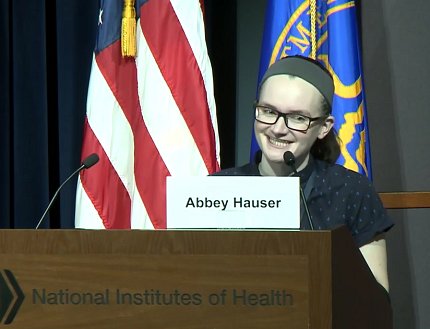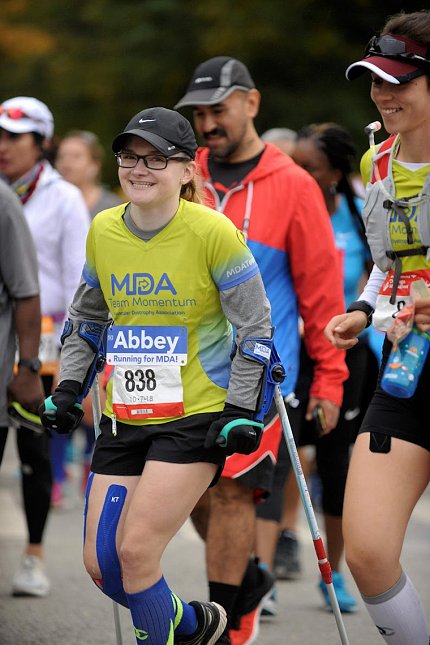Rare Disease Day Inspires, Offers Resources and Hope
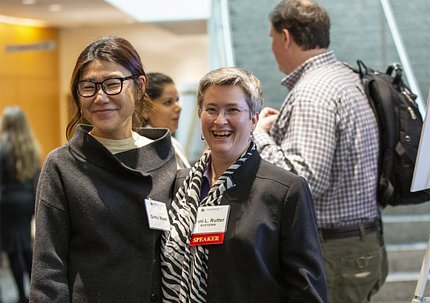
Photo: NCATS
People with rare diseases and their loved ones, clinicians, researchers and patient advocates were among the more than 2,000 participants in this year’s Rare Disease Day at NIH on Feb. 28. The Natcher Conference Center was abuzz with hundreds of in-person attendees while many more tuned in via videocast for the hybrid event, co-sponsored by the National Center for Advancing Translational Sciences (NCATS) and the Clinical Center.
The day’s sessions expounded on rare disease clinical research and resources as well as ways to improve the patient experience. Several panels focused on an often-underserved population in the rare disease world—adolescents and young adults.
During welcoming remarks, Clinical Center CEO Dr. James Gilman said, “This is a day when the head acquires new information and knowledge. It’s also a day when the heart renews hope and finds sources of new inspiration.”
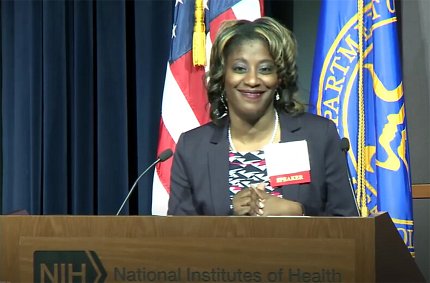
Photo: NCATS
A rare disease is one that affects fewer than 200,000 people in the U.S. There are more than 10,000 different rare diseases affecting more than 30 million people nationwide and more than 350 million people worldwide. Most rare diseases have few if any effective treatments.
Critical to finding new therapies is securing science funding, an effort driven by a cadre of bipartisan policymakers and legislators who support the research. Several members of the Rare Disease Congressional Caucus delivered virtual remarks, voicing their support for continued research to find new therapies for rare ailments.
“This day is about pausing to remember loved ones we’ve lost,” said NCATS Director Dr. Joni Rutter, “to celebrate the big and small wins, to support those who work tirelessly in caring for people with rare diseases, to honor all people with a rare disease and recognize that struggle, and to hear about new ideas and projects that spell hope.”
Treatments on the Horizon
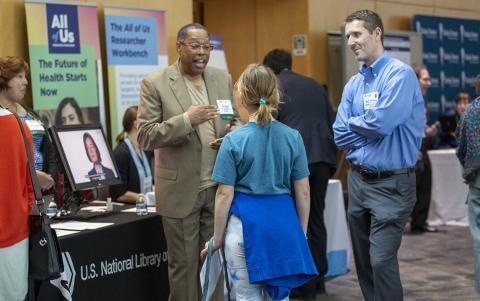
Photo: NCATS
Most rare diseases emerge from a single gene variant, “so gene therapy is potentially a powerful approach for treating a wide range of rare diseases, including those viewed as too rare for commercial development,” said Dr. Lawrence Tabak, performing the duties of NIH director.
He outlined several initiatives—the Accelerating Medicines Partnership-Bespoke Gene Therapy Consortium, the Somatic Cell Genome Editing program and the Platform Vector Gene Therapy project—all underway at NIH to help speed development of new gene therapies. NCATS plays a leadership role in each of these initiatives.
Rutter noted that NCATS is developing platform-based technologies to enable more treatments to reach patients faster. And more help is on the way.
The Food and Drug Administration (FDA) is gearing up for a pilot program to authorize therapeutics that show promise. “This idea will allow faster clinical development with more real-time FDA-sponsored communications, which can ultimately move products as fast as possible through the regulatory pipeline,” said Rutter.
Improving the AYA Patient Experience
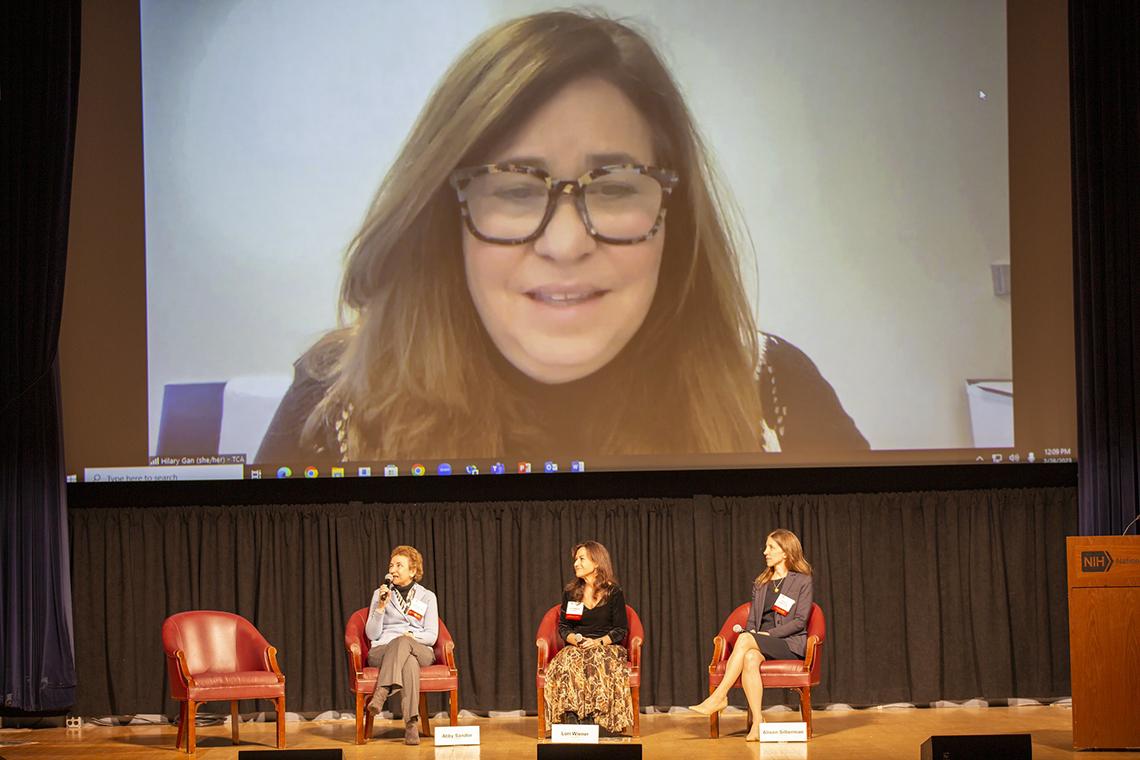
Photo: NCATS
Several panels were devoted to the challenges and needs of adolescents and young adults (AYAs)—those 15-39 years old—living with rare diseases. One panel focused on the needs of AYAs with cancer.
“This age group had not seen improvement in survival of older and younger cancer patients in almost 30 years. Luckily, that is changing,” said Hilary Gan, director of hospital programs and services at Teen Cancer America, who spoke virtually from Los Angeles.
But difficulties remain and likely resonate among AYAs with any rare disease. AYAs don’t fit into the current health system, which is set up for children and adults. AYAs fall somewhere in between.
“They need age-specific, appropriate, targeted support even after they leave the hospital to address their unique challenges,” said Alison Silberman, CEO of Stupid Cancer, a national non-profit that offers resources and community-building programs.
For AYAs who have gone through treatment, long-term side effects affect their physical, emotional and social well-being, noted Gan. AYAs need financial counseling and assistance; educational, occupational and psychosocial support; fertility counseling; and more targeted clinical research.
For adolescents with a rare disease, instead of thinking about fun teen stuff—friends, romance, graduation—they’re thinking about treatment and survival. They’re also thinking about mortality.
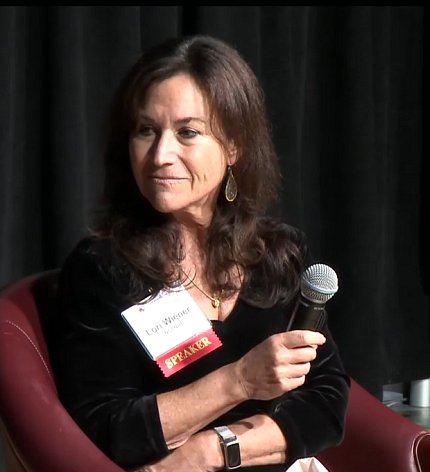
Photo: NCATS
It’s one of the hardest conversations but AYA cancer patients should discuss their end-of-life preferences and wishes with family members and health care providers. Often, though, AYAs and their guardians don’t know how or when to broach the topic.
“We know adolescents have preferences for what they want and don’t want,” said Dr. Lori Wiener, director of the Psychosocial Support and Research Program in NCI’s Pediatric Oncology Branch.
After conducting a series of focus groups and a study that included participants at NCI and Georgetown, a resource was created for AYAs to facilitate communication about preferences for how they would like to be supported and comforted if they become seriously or terminally ill. That guide, Voicing My CHOiCES, also covers issues of identity, spirituality, autonomy and commemoration. It was published in multiple languages and has been requested in 42 countries.
“Perhaps the most important finding from a follow-up study at seven U.S. cancer centers was that anxiety around end-of-life planning decreased significantly immediately after [AYAs and their families] reviewed the document and a month later,” Wiener said. Follow-up has confirmed AYAs want to discuss end-of-life preferences and reap benefit from those conversations.
Transitioning to Adult Care
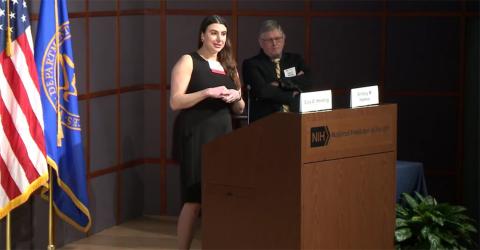
Photo: NCATS
Many rare diseases start in childhood and require specialty care throughout the person’s life. Two speakers shared their thoughts from a provider and patient perspective.
There are few adult-focused centers for rare diseases, particularly those that start in childhood, said Dr. Cary Harding, a pediatric specialist at a hospital in Oregon.
“I as a pediatrician, even though I’m trained as a geneticist and that handles the lifespan, don’t understand a lot of adult-onset disease,” he said. And since his main connections are in pediatrics, he struggles to find adult-specific resources for pediatric patients when they become adults.
Brittany Holmes is a nurse practitioner in a free-standing pediatric hospital—Boston Children’s—that does not have adult providers. Even if she had access to other local hospitals, that hospital might not be equipped with a rare disease specialist able to care for these patients.
Helping AYAs transition is a twisty journey of tracking down referrals and support services with little guidance in what often becomes fragmented care at multiple centers, frustrating patient and provider alike.
Holmes is both a provider and a rare disease patient. She can see both sides.
“I remember being a little afraid [of going to an adult-focused center],” she shared. “I was treated at the same place since I was born. I trusted the health care team I had; starting over sounded scary.”
A collaborative approach is needed, Holmes said, to improve AYA protocols and guidelines. Expand options and resources, and continue research to broaden treatment choices, she urged.
As the Clinical Center continues to improve resources and emergency response capabilities for patients of all ages, Gilman acknowledged the many players in the rare disease landscape—scientists and clinicians; patients and their families; advocacy organizations and policymakers.
“Rare Disease Day is unique in that it brings all the components of this ecosystem into the same orbit,” he said. “It’s a reminder that none of us are in this work alone.”

